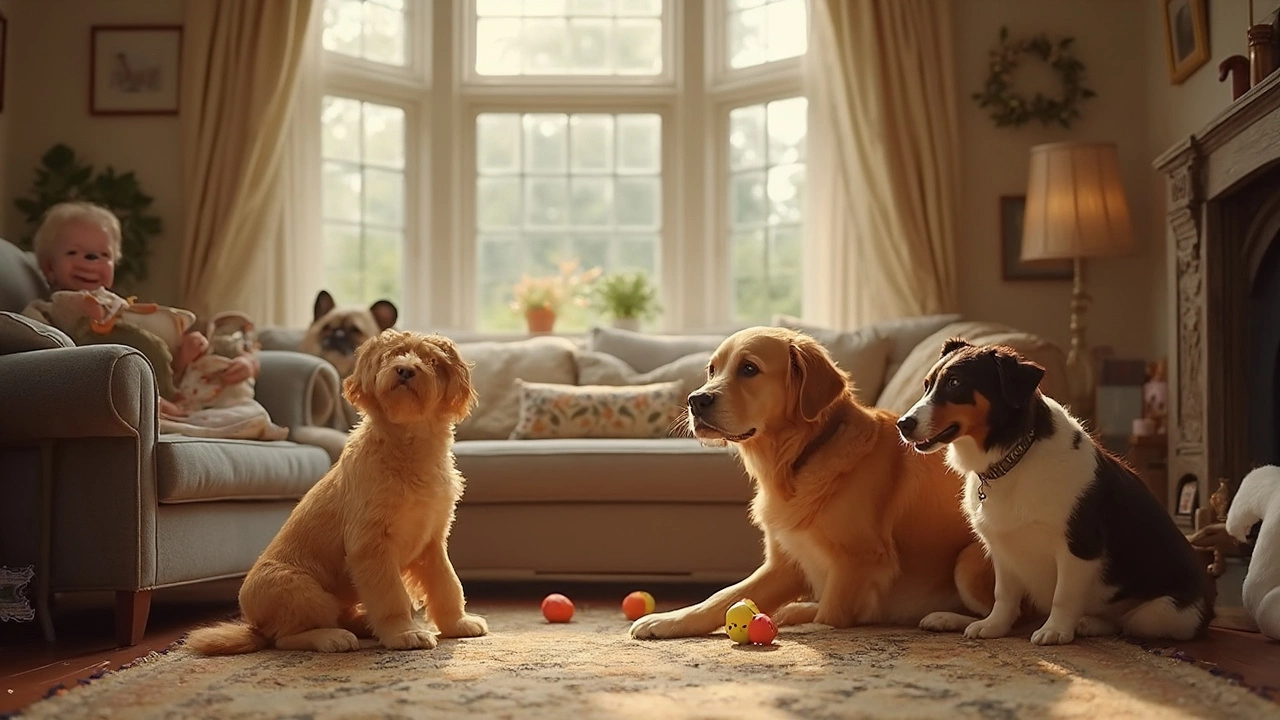Puppy Age Stages – What to Expect at Every Month
Got a new pup and wonder why they change so fast? Knowing the age stages helps you give the right food, training and care at the right time. Below is a quick walkthrough of each phase, plus easy tips you can start using today.
Newborn to 4 Weeks: The Foundation
During the first month your puppy is basically a fluffy heating pad. Their eyes and ears are still closed, and they rely on their mother (or a bottle) for nutrition. Keep the area warm (around 85°F) and handle them gently to build trust. If you’re hand‑raising, feed 4‑5 small meals a day using a puppy‑specific formula. No training yet—just focus on safe handling and a clean, quiet space.
4 to 12 Weeks: Socialising and Learning
This is the fun part. Eyes open, ears perk up, and the world becomes a playground. Start short, positive training sessions (5‑10 minutes) teaching sit, come and gentle bite inhibition. Introduce a soft chew toy at about 4 weeks to help with teething. Socialise with other vaccinated dogs and people daily – the more calm experiences they have, the less fear they’ll develop later.
Nutrition shifts to high‑protein puppy kibble or wet food. Feed three to four meals daily, measuring portions to avoid over‑feeding. A gentle routine for bathroom breaks—take them outside every 2‑3 hours—helps with crate training and reduces accidents.
3 to 6 Months: Building Good Habits
Now the puppy’s energy spikes. Short bursts of play are followed by quick naps. Keep training consistent; practice basics while they’re still curious. Start leash training in a low‑distraction area and reward calm walking. Teeth are still coming in, so provide durable chew toys and rotate them to keep the pup interested.
Meals can drop to three times a day, but keep the protein level high. Monitor weight – a healthy puppy should have a visible waist when viewed from above. Vet check‑ups at 12 weeks and 16 weeks catch any health bumps early.
6 to 12 Months: The Teen Years
Almost adult size, but still a teenager. Hormones can cause a bit of misbehaviour – think occasional stubbornness or chewing on cords. Reinforce the “leave it” command and continue rewarding calm behavior. Extend leash walks, introduce basic agility or scent games to burn mental energy.
Transition to two meals a day around the 6‑month mark. Choose a high‑quality adult‑transition food if you plan to switch later, or stay on a puppy formula until they’re 12 months (larger breeds may need longer). Keep vaccinations up‑to‑date and discuss spaying/neutering with your vet.
Throughout every stage, watch for signs of illness: loss of appetite, vomiting, diarrhea, or unusual lethargy. Quick vet visits prevent bigger problems.
Bottom line: match your care to the stage. Fresh food, short training bursts, safe chew toys and plenty of love will keep your puppy on the right track. By understanding these age milestones, you’ll avoid common pitfalls and enjoy a well‑behaved, happy dog for years to come.

When Is a Puppy Not a Puppy? Understanding the Real Transition
Puppies don't stay tiny and clumsy forever, but exactly when do they stop being puppies? This article breaks down the transition from puppyhood to adulthood, looking at what changes physically, mentally, and socially. You'll find out how breed sizes play a big role, how behavior shifts over time, and why your 'little baby' may start acting more like a moody teenager. There are practical tips to spot the signs of growing up and advice for handling those awkward in-between months. If you're raising a pup, this guide is your go-to for understanding when your dog truly leaves puppyhood behind.
View more